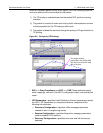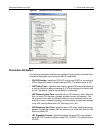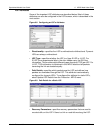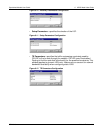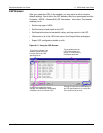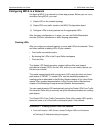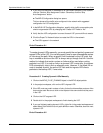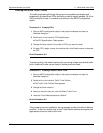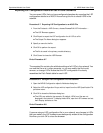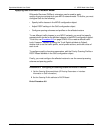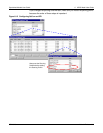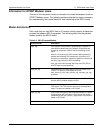
Specialized Models User Guide 6 MPLS Model User Guide
SPM-6-22 Modeler/Release 10.0
Information for OPNET Modeler Users
The rest of this document contains information for model developers (such as
OPNET Modeler users). The following sections describe the topics necessary
for understanding the internal details of and interfacing to the MPLS model.
Model Architecture
Each node that can use MPLS has an IP module, which contains a dispatcher
process that spawns MPLS processes. The following table lists the process
models used by the MPLS model.
Table 6-4 MPLS Process Models
Process model Description
mpls_mgr One instance of this process is spawned by ip_dispatch on
each MPLS enabled node in the network. It represents the
forwarding component of MPLS and the forwarding control
plane.
When the IP module of an LSR receives labeled packets or
packets with matching FEC descriptions, it performs no IP
processing on the packet. Instead, the packet is re-directed to
the mpls_mgr process for MPLS forwarding.
mpls_mgr uses ILM (incoming label map) and FTN (FEC to
NHLFE maps) to forward packets.
mpls_ldp_mgr Implements the LDP control plane in the LDP module of all
routers. This process is the dispatcher for the
mpls_discovery_mgr, mpls_session_mgr, and mpls_lsp_mgr
processes.
mpls_discovery_mgr Sends periodic broadcast hello messages over UDP to
discover MPLS-enabled neighbor routers.
mpls_session_mgr Negotiates, opens, and maintains TCP sessions to neighboring
LDP routers. The TCP sessions are used to exchange label
maps. This process is based on RFC 3036.
mpls_lsp_mgr Controls the exchange-to-label mappings between LDP peers.
Communication with LDP peers occurs through the session
established by the mpls_session_mgr process. This process is
based on RFC 3036.
End of Table 6-4



